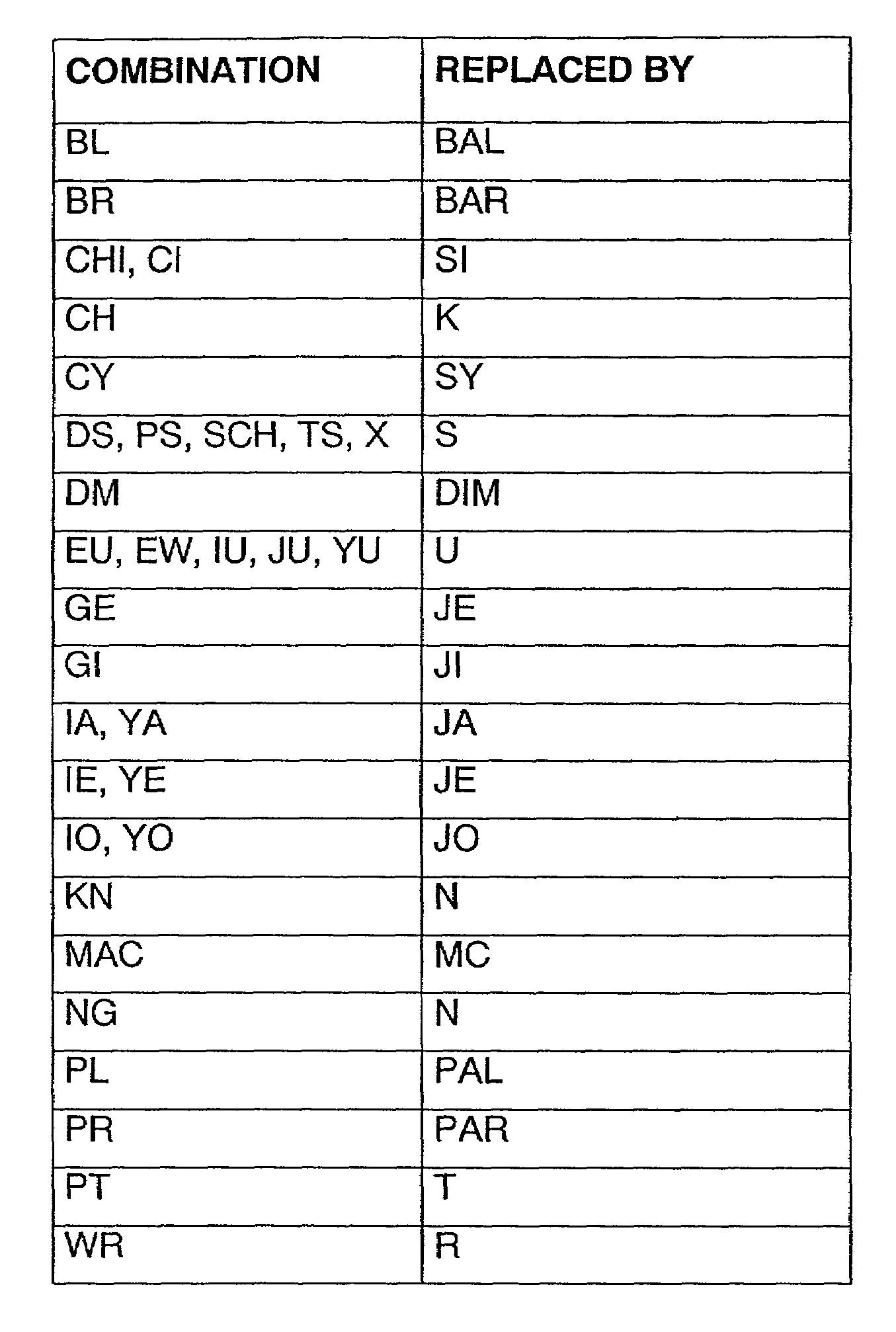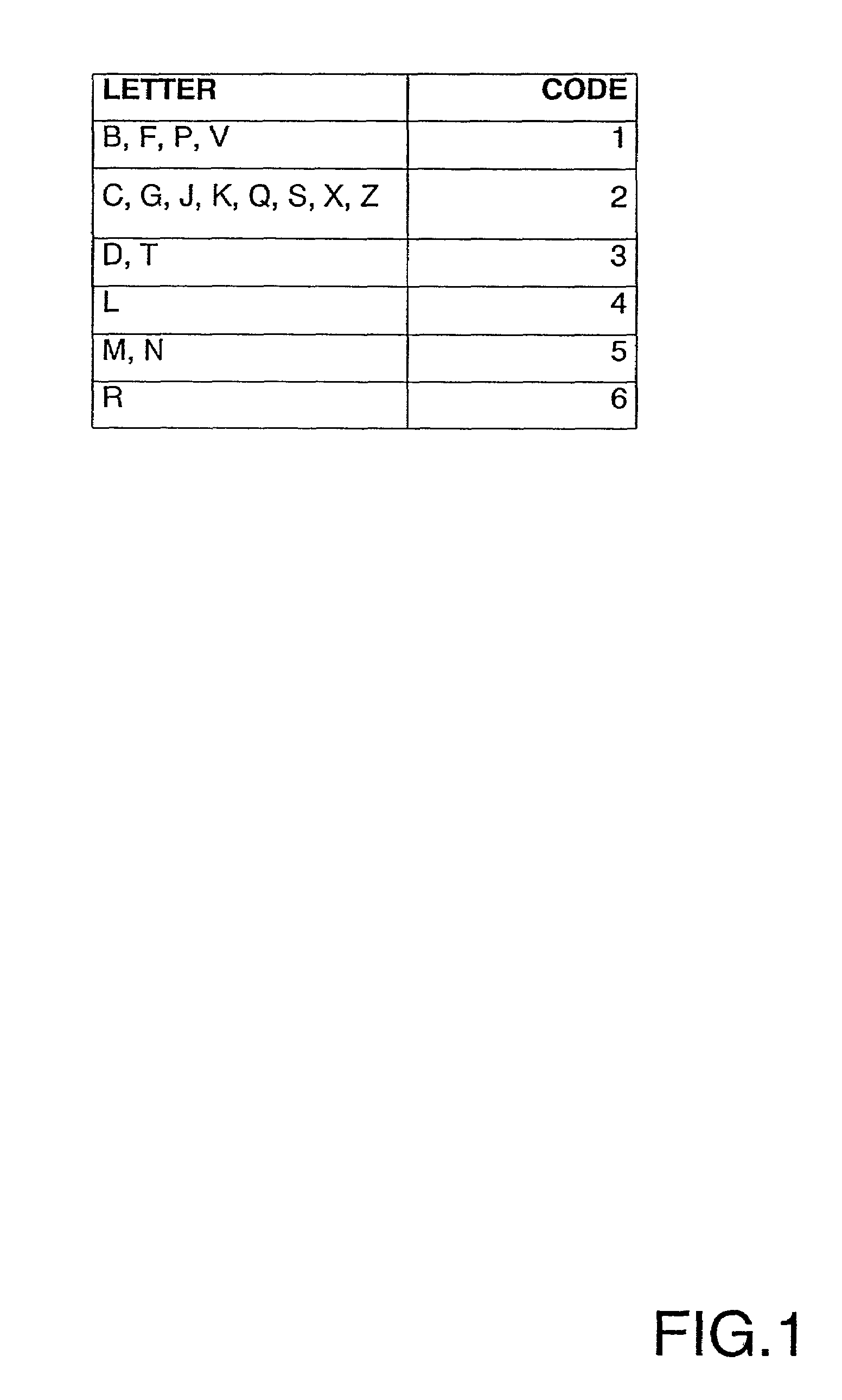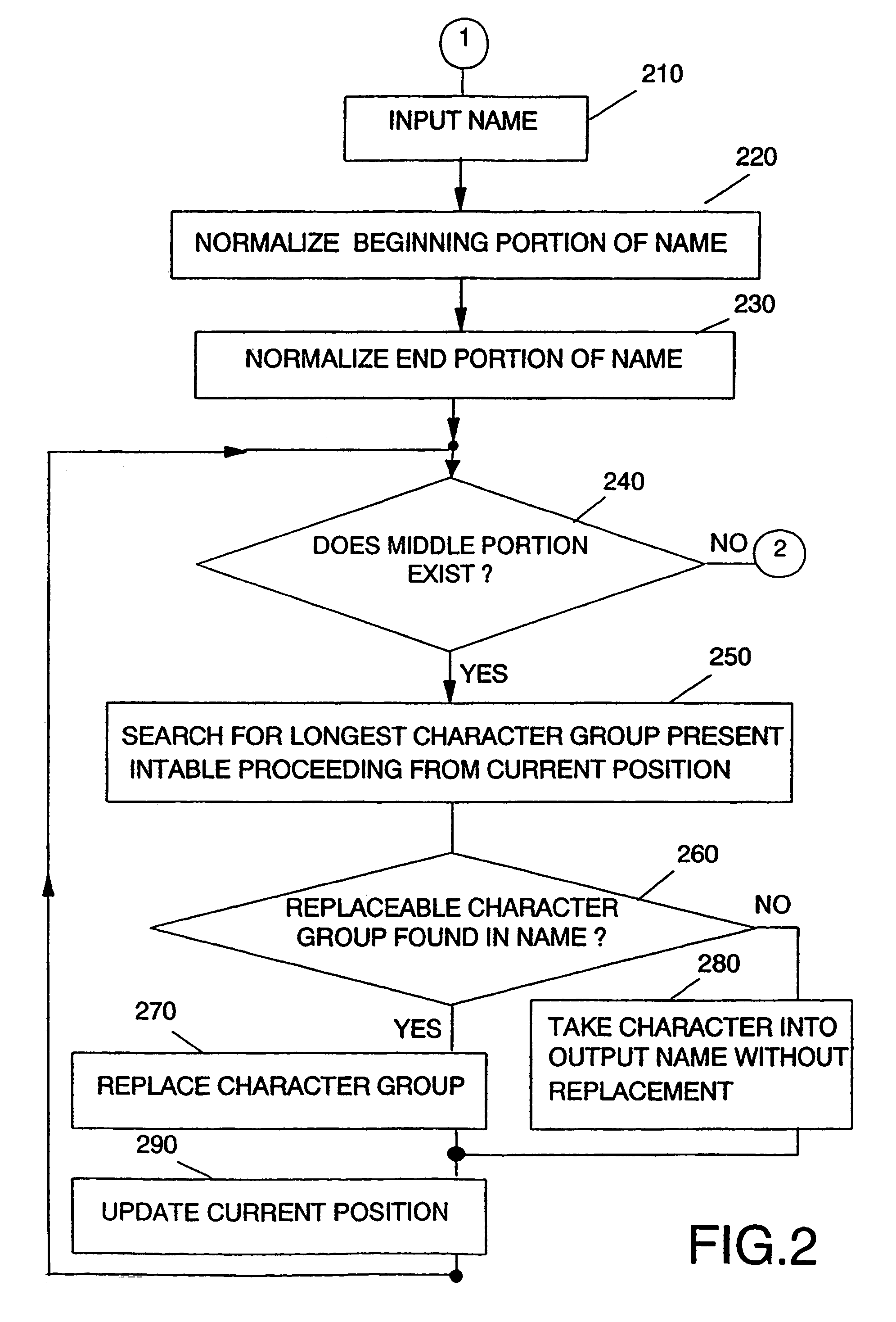Coding and storage of phonetical characteristics of strings
a phonetic characteristic and string technology, applied in the field of coding and storage of phonetic features, can solve the problems of significant performance loss and limited soundex method, and achieve the effect of less ambiguity and better computing performan
- Summary
- Abstract
- Description
- Claims
- Application Information
AI Technical Summary
Benefits of technology
Problems solved by technology
Method used
Image
Examples
examples
[0080]30525000 becomes 0011 0000 0101 010 101 000 000 000[0081]03684000 becomes 0000 0011 0110 000 100 000 000 000
[0082]Then in a next step 360 the first 5 bits of the first letter which was coded in step 310 is combined with the bit string generated in step 350 by appending the bit string from step 350 at the end of the 5-bit string, i.e. beginning with bit number 6.
example
[0083]Thompson becomes 10011001 10000010 10101010 00000000[0084]Lauterbach becomes 01011000 00011011 00001000 00000000
[0085]Then, in a step 370 the resulting 32 bit long, combined bit string is stored together with the input name, for example in a database.
[0086]Said database can, for example, belong to a customer care service center where the customer's details are kept in said database. When entering and saving the details of the customer the algorithm described above is used to compute the phonetic value of the customer's family name, for example. This value is stored in the database together with the customer record. Other attributes associated to the customer could be stored in the same way if this was appropriate to do from a business point of view.
[0087]When a customer calls the service center via a telephone call, for example, the telephonist of the customer care service center is enabled to find the proper customer record by typing the customers name into the system in a wa...
PUM
 Login to View More
Login to View More Abstract
Description
Claims
Application Information
 Login to View More
Login to View More - R&D
- Intellectual Property
- Life Sciences
- Materials
- Tech Scout
- Unparalleled Data Quality
- Higher Quality Content
- 60% Fewer Hallucinations
Browse by: Latest US Patents, China's latest patents, Technical Efficacy Thesaurus, Application Domain, Technology Topic, Popular Technical Reports.
© 2025 PatSnap. All rights reserved.Legal|Privacy policy|Modern Slavery Act Transparency Statement|Sitemap|About US| Contact US: help@patsnap.com



